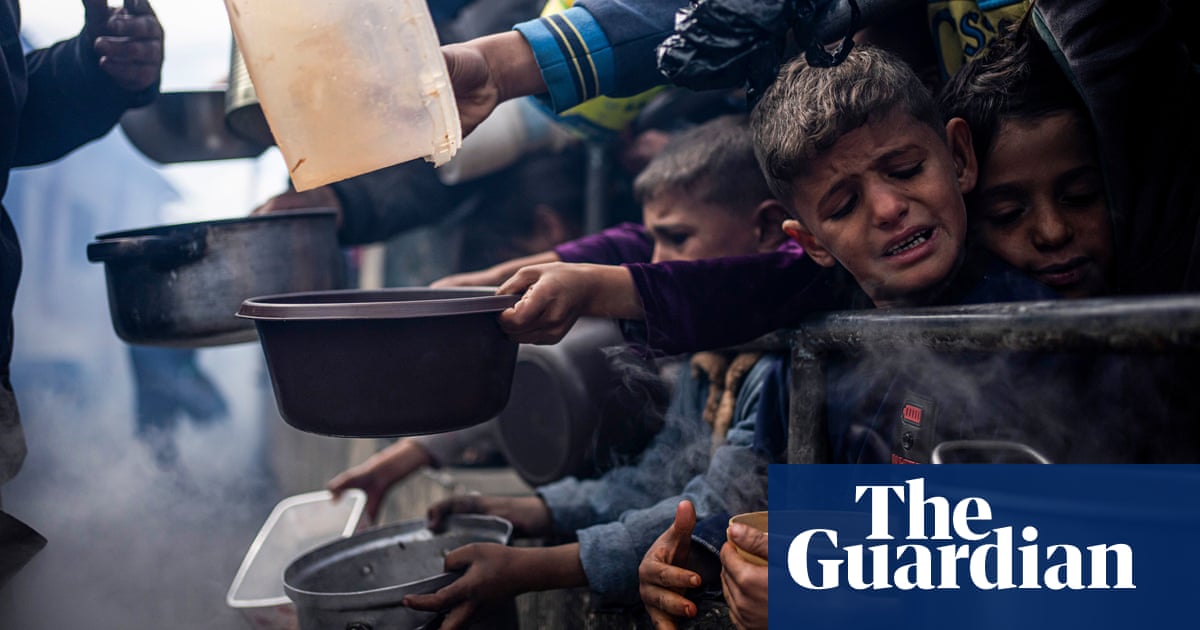Fears Israel is influencing location of dock away from the north, where famine threat is most severe. A giant floating dock is nearing completion in the eastern Mediterranean from where it will be pushed towards the Gaza shore, but there is growing uncertainty over how useful the US project will be in containing a famine.
There are concerns in the humanitarian community that Israel has co-opted the pier plan, which Joe Biden touted as a way to bring about a “massive” increase in aid to Gaza, with one aid official saying the project was in danger of becoming a “smokescreen” for the planned invasion of Rafah.
The dock has been built off US naval vessels and is expected to be in position by early May. According to several aid officials, the current plan is to anchor it not off northern Gaza, where the threat of famine is most severe, but at a point halfway up the strip where the Israel Defense Forces (IDF) have a stronghold.
That would mean that food aid brought in via the dock would still have to pass through an IDF checkpoint at the Netzarim corridor, a military road that bisects the strip, and which has been a choke-point stopping humanitarian deliveries reaching the north.
Some UN and other humanitarian officials fear that the aid will be diverted south to camps set up for the more than 1 million people now sheltering in Rafah. The IDF wants them to move out so that it can conduct an offensive against Hamas units in Gaza’s southernmost city.
Such an offensive would inevitably mean the temporary closure of Rafah and Kerem Shalom crossings in southern Gaza, so the US-made floating dock would serve as a substitute, while at the same time diverting pressure on Israel to open northern crossing points to substantial aid traffic.
“One of the key arguments for having a dock was to put it further north so that suppliers could come in more directly to the north,” a UN official said, adding that what was actually being proposed looked more like a “smokescreen to enable the Israelis to invade Rafah”.



This is the best summary I could come up with:
That would mean that food aid brought in via the dock would still have to pass through an IDF checkpoint at the Netzarim corridor, a military road that bisects the strip, and which has been a choke-point stopping humanitarian deliveries reaching the north.
“Operational conversations continue with WFP to ensure safe and sustainable delivery of humanitarian assistance to Palestinian civilians in Gaza in an independent, neutral, and impartial manner,” a USAid spokesperson said.
“The UN has agreed to work with the US and other partners on the maritime corridor as an additional route for relief to Gaza, on the condition that humanitarian principles can be ensured and that land access is also expanded,” a spokesperson said.
Meanwhile, a parallel scheme is being promoted by a private firm called Fogbow, made up of former US special forces, marines, CIA officers, a former diplomat, a former fund manager and a veteran UN aid official.
However, humanitarian aid officials are concerned that the Fogbow venture, if it took off, could crowd out UN agencies and NGOs in the competition for scarce resources, such as trucks and drivers to distribute food around Gaza, and the time and attention of Israeli security screeners who are setting up a station in the Cypriot port of Larnaca to police the sea corridor.
If and when the maritime route opens and ships begin arriving at the US-made floating dock, it will be a spectacular, challenging but an extremely expensive and slow way of delivering aid.
The original article contains 1,455 words, the summary contains 247 words. Saved 83%. I’m a bot and I’m open source!